Introduction to the Anchorage Museum
Located in the heart of downtown Anchorage, the Anchorage Museum is the largest museum in Alaska and a cultural institution of international standing. With a mission to explore the land, history, art, and people of Alaska and the circumpolar North, the museum is a dynamic and comprehensive guide to the “Last Frontier.” Its modern, striking architecture, featuring a glass-enclosed atrium and a new wing, provides a welcoming space for both locals and visitors to learn about the state’s past, present, and future.
Why It’s a Must-Visit in Alaska
For anyone looking to understand Alaska beyond its breathtaking scenery, the Anchorage Museum is an essential stop. It offers a multifaceted view of the North, telling a story that weaves together social, political, cultural, scientific, and artistic threads. Here’s what makes it so unique:
- The Smithsonian Connection: As a Smithsonian Affiliate and home to the Smithsonian Arctic Studies Center, Anchorage Museum houses a significant collection of Alaska Native artifacts on long-term loan from the Smithsonian Institution. This exhibit provides a powerful and authentic look at the diverse cultures of Alaska’s indigenous peoples.
- Comprehensive History: The Alaska Exhibition is a meticulously curated journey through Alaska’s history, from its indigenous roots to the era of Russian colonization, the Gold Rush, and the modern oil boom. It uses a mix of historical objects, immersive dioramas, and multimedia displays to bring the past to life.
- All-Ages Appeal: Anchorage Museum is not just for history buffs. The Imaginarium Discovery Center is a hands-on science area that is perfect for families, with interactive exhibits on everything from the Northern Lights to an earthquake simulator and a planetarium.
Table of Contents
History of Anchorage Museum
The Anchorage Museum’s journey from a small, local gallery to a world-class institution is a testament to the community’s commitment to preserving and celebrating Alaska’s unique heritage.
Founding and Early Years
Anchorage Museum’s story begins with the vision of a public-private partnership to commemorate the 100th anniversary of the Alaska Purchase in 1867. Thanks to a federal grant and the dedicated fundraising efforts of Mayor Elmer Rasmuson and his wife, Mary Louise, the museum opened its doors on July 18, 1968. At its inception, Anchorage Museum was a modest 10,000-square-foot facility, with a small exhibition of 60 borrowed Alaskan paintings and a collection of 2,500 historical and ethnographic objects on loan from the Cook Inlet Historical Society. It was originally named the Anchorage Historical and Fine Arts Museum, and its primary purpose was to tell the story of the Anchorage area and its surrounding regions.
Expansion and Modern Developments
Anchorage Museum’s growth has mirrored the city’s, marked by several significant expansions that transformed it into the major institution it is today.
- The “Project 80s” Expansion: In the 1980s, fueled by the revenue from the state’s oil boom, Anchorage Museum underwent a major expansion. This project, which was completed in 1986, dramatically increased Anchorage Museum’s size to over 90,000 square feet, adding a new atrium, auditorium, and dedicated galleries for its growing collection.
- The Smithsonian Partnership: A major milestone in Anchorage Museum’s history was the establishment of its partnership with the Smithsonian Institution. In 2010, the Smithsonian Arctic Studies Center opened its doors within the museum, bringing a collection of over 600 masterworks of Alaska Native art and artifacts from the Smithsonian’s National Museum of Natural History and National Museum of the American Indian.
- The Rasmuson Wing Expansion: The most recent expansion, completed in 2017 and funded largely by the Rasmuson family and foundation, added the modern Rasmuson Wing. This wing added 25,000 square feet of gallery space, allowing the museum to showcase more of its art collection and creating a new home for the Alaska exhibition and an expanded Discovery Center. The modern, glass-fronted design by renowned architect David Chipperfield has given the museum a new, striking presence in downtown Anchorage.
Exhibits and Collections
The Anchorage Museum’s extensive collection is a powerful gateway to understanding Alaska’s diverse cultures, with a particular emphasis on its indigenous heritage. The museum provides an authentic, multi-layered look at the art, history, and traditions of Alaska Native peoples.
Alaska Native Heritage
The Anchorage Museum is a cultural anchor for the state, housing a significant collection of artifacts from Alaska Native communities. Its most important exhibit in this area is the Smithsonian Arctic Studies Center, a groundbreaking partnership with the Smithsonian Institution. This collaboration has brought more than 600 rare Alaska Native cultural heritage objects back to Alaska on long-term loan from the national museums in Washington, D.C. The exhibition, “Living Our Cultures, Sharing Our Heritage: The First Peoples of Alaska,” is a visually stunning presentation of these masterworks, from intricate garments to ceremonial masks.
Discover more beautiful places here
Indigenous Art and Traditions
Anchorage Museum’s collection showcases the incredible artistry and ingenuity of Alaska’s indigenous peoples. The items on display are not simply historical objects; they are a testament to living traditions.
- Masterful Craftsmanship: The exhibits feature a wide array of meticulously crafted items, including beautifully beaded Athabascan moose-hide bags, intricately carved Yup’ik masks, and masterful bentwood boxes from the Tlingit, Haida, and Tsimshian cultures.
- Contemporary Art: Anchorage Museum also actively collects and exhibits contemporary Alaska Native art, showing how ancient traditions are being reinterpreted and expressed in modern media like photography, painting, and sculpture. This highlights the dynamic and evolving nature of indigenous cultures.
Cultural Significance
The cultural significance of Anchorage Museum’s collection goes beyond aesthetics. The artifacts are presented not just as art objects, but within the context of the communities and daily lives they represent.
- Living History: Through interactive displays, videos, and oral histories, visitors can hear directly from Alaska Native elders, artists, and scholars who provide their own interpretations of the objects. This approach ensures the stories and knowledge behind the artifacts are shared from an indigenous perspective.
- A Tool for Learning: The Smithsonian Arctic Studies Center also includes a workshop and community space where Alaska Native elders and artists can conduct hands-on research and study the objects. This makes Anchorage Museum a vital resource for cultural revitalization, allowing a new generation to connect with their heritage and traditional skills.
Art of the North
The Anchorage Museum’s commitment to the circumpolar North extends to its impressive collection of art, which provides a visual narrative of Alaska’s landscape and people from a variety of perspectives. The Art of the North galleries, located in the museum’s modern Rasmuson Wing, showcase works that span centuries, connecting historical depictions with contemporary expressions.
Contemporary Alaska Artists
Anchorage Museum’s collection features a wide array of works by contemporary artists, many of whom are from Alaska or the North. Their art often reflects modern themes related to the environment, climate change, and the evolving culture of the region.
- Alvin Amason: A renowned contemporary artist whose large-scale works, like his mural “Everything I Love Is Here,” often explore the relationship between the people of Alaska and the land.
- Joe Senungetuk: A celebrated Alaska Native artist who has created politically charged works and abstract sculptures that speak to the changing social and political landscape of Alaska.
- Kes Woodward: An art historian and painter whose works often capture the unique light and landscape of Alaska in a distinct, expressive style.
- Brianna Allen: A contemporary artist whose works explore themes of motherhood and identity through painting and installation.
Historic Artworks
The Anchorage Museum also holds a significant collection of historic artworks that document the early exploration and settlement of Alaska. These pieces offer a fascinating glimpse into how the North was viewed by explorers, artists, and pioneers from the 18th century onward.
- Sydney Laurence: Anchorage Museum has an entire gallery dedicated to the work of Sydney Laurence, arguably Alaska’s most famous and beloved artist. His romantic landscape paintings, particularly his iconic depictions of Mount McKinley (Denali), are a cornerstone of the museum’s collection and have come to define the popular image of Alaska.
- Expedition Artists: The collection includes documentary works from early European and American expedition artists who chronicled their journeys into the vast, unknown wilderness of Alaska. Their paintings and drawings provide a unique historical record of the landscape and the people they encountered.
- Historic Landscapes: The museum features Romantic landscape paintings from the 19th and 20th centuries, providing a contrast between the more traditional style of historic art and the modern works that reflect a changing world.
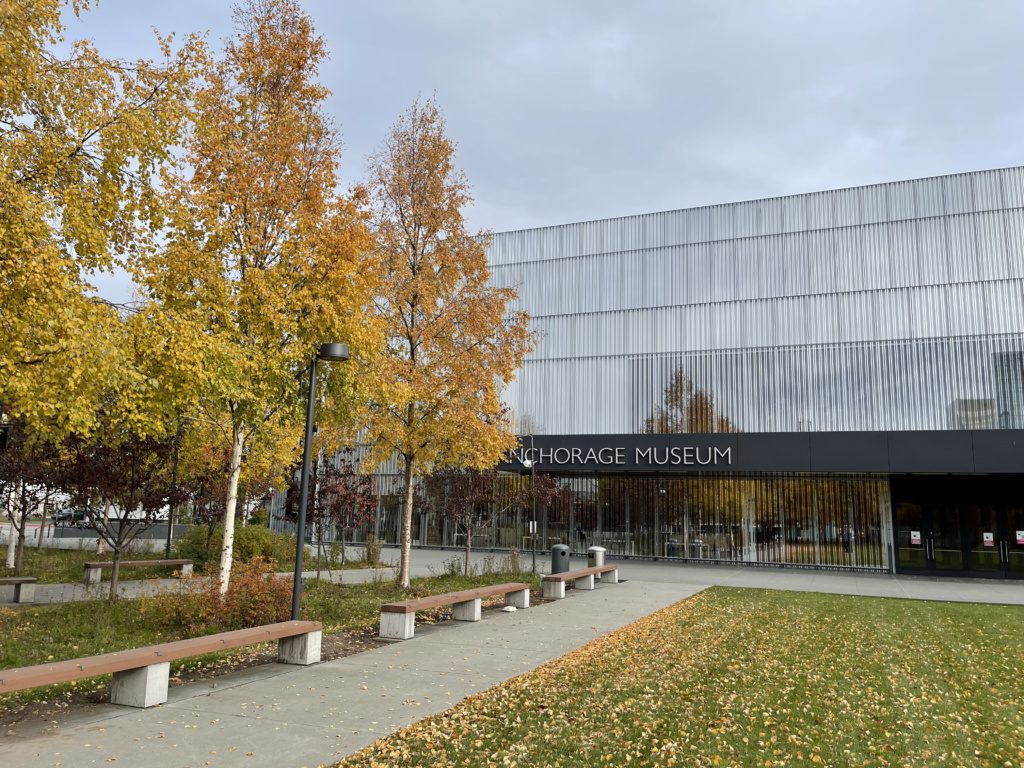
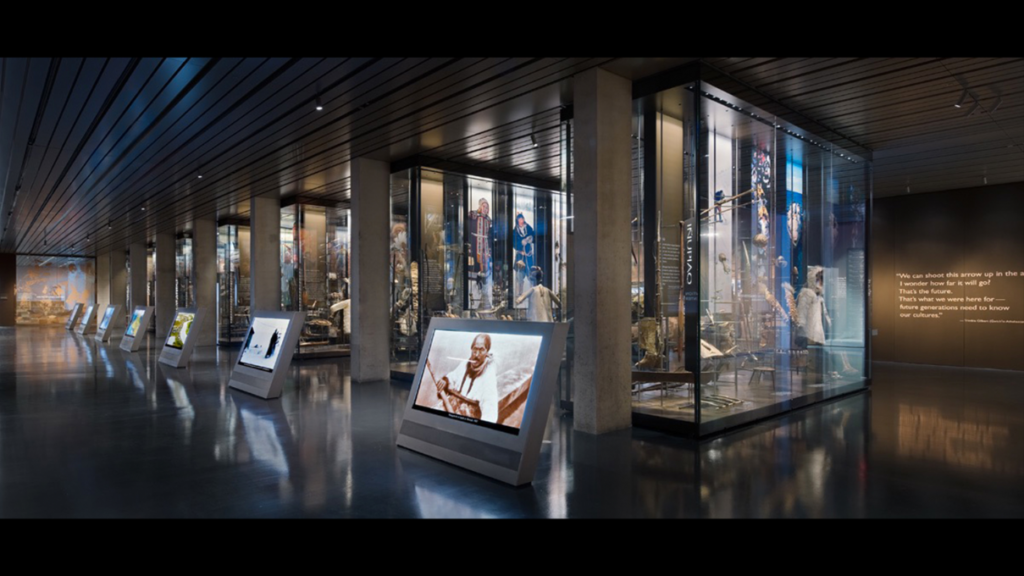
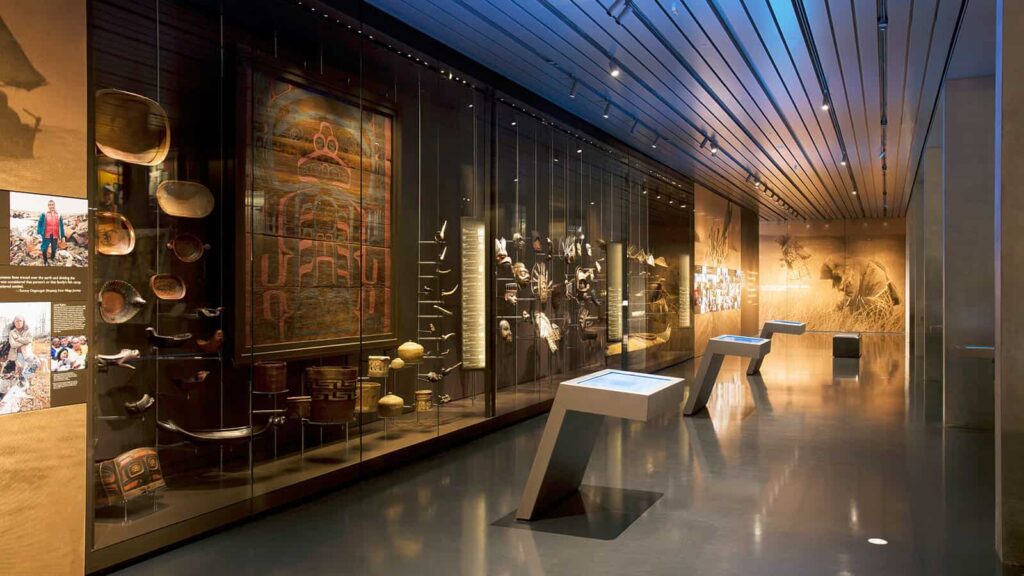
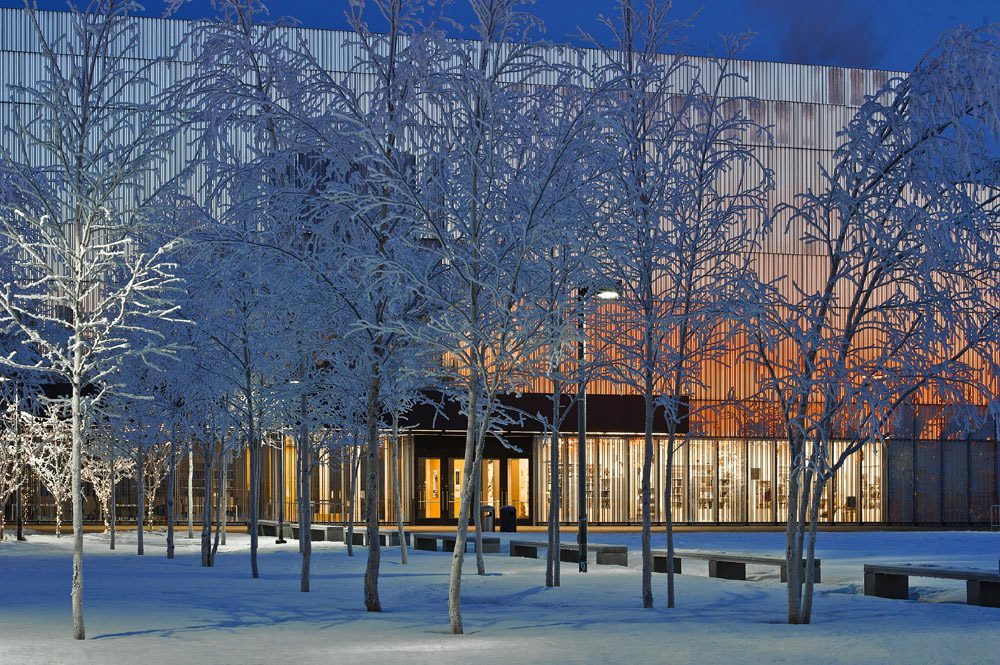
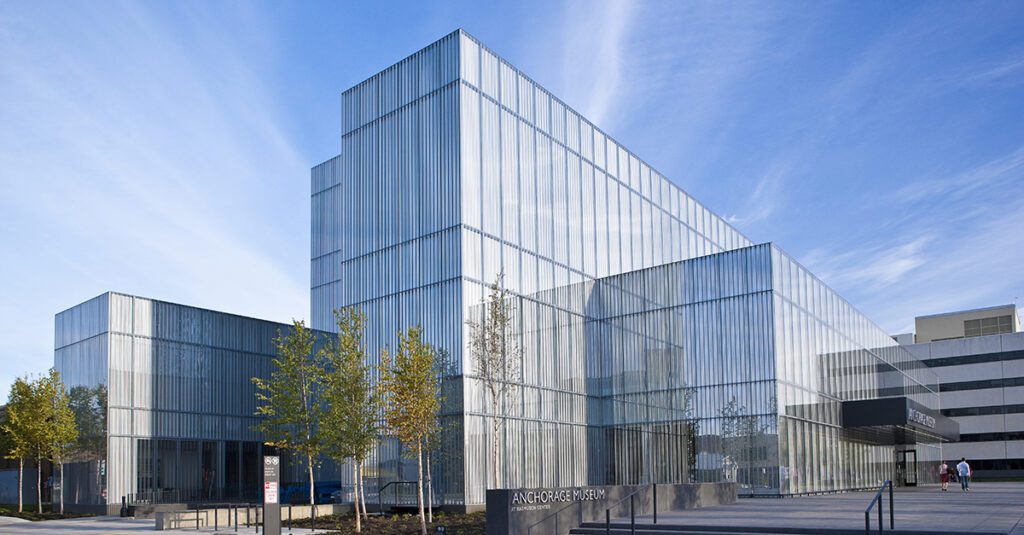
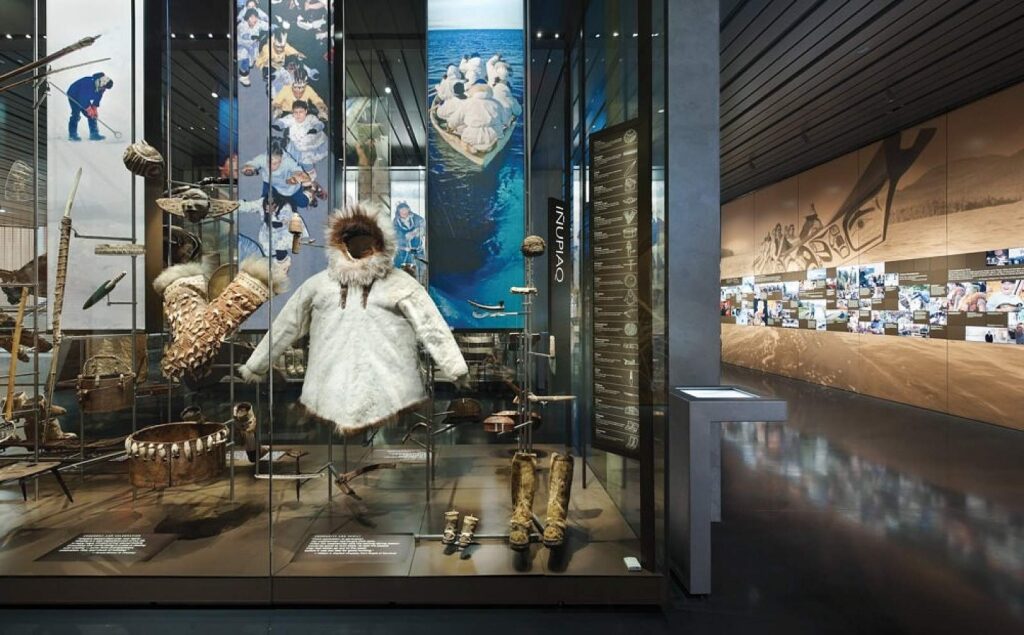
Science and Innovation
Beyond its art and history collections, the Anchorage Museum is a hub for science and innovation, with a variety of interactive exhibits designed to engage visitors of all ages in the wonders of the natural world.
Discovery Center Highlights
The Imaginarium Discovery Center is a major highlight, especially for families and school groups. This award-winning science center is a playground for the mind, where visitors can learn about the scientific principles that shape Alaska’s unique environment.
- The Thomas Planetarium: This planetarium offers shows that take you on a journey through the universe, from the local celestial wonders like the Aurora Borealis (Northern Lights) to distant galaxies.
- Earthquake Simulator: Visitors can experience the power of the earth firsthand in a simulated earthquake, learning about the geological forces that have shaped Alaska’s landscape, most notably the devastating 1964 Good Friday Earthquake.
- Live Marine Animals: A touch tank allows visitors to get up close and personal with local marine life, including sea stars and other creatures from the waters of Alaska.
STEM-Focused Exhibits
Anchorage Museum’s focus on science, technology, engineering, and mathematics (STEM) is a core part of its mission to explore the North.
- Land, Water, and Sky Zones: The Discovery Center is divided into themed zones that encourage hands-on learning. The Land Zone explores geological forces, the Water Zone focuses on the power of water in all its forms (ice, liquid, and vapor), and the Sky Zone delves into the extreme seasons and celestial phenomena of the Arctic.
- INNOVATION Zone: This area is dedicated to showing how Alaska’s challenging environments drive creative solutions and scientific inquiry. It highlights how Alaskans have used technology and design to solve unique problems, from living in extreme cold to navigating a complex landscape.
- TOTE Kidspace: For the youngest visitors (ages 5 and under), the museum has a dedicated play area that provides a safe and fun environment for exploring the theme of “home” through play-based learning.
Temporary and Traveling Exhibits
The Anchorage Museum’s commitment to presenting a dynamic and relevant view of the North is reflected in its ever-changing lineup of temporary and traveling exhibits. These exhibitions allow the museum to explore a wide variety of topics, from contemporary social issues to historical explorations and artistic movements.
- Current Exhibitions: Anchorage Museum consistently hosts a diverse range of temporary exhibits. These often include explorations of topics like human-animal relationships, the impact of climate change on the Arctic, and humor as a coping mechanism in the North.
- Upcoming Events and Shows: Be sure to check Anchorage Museum’s calendar for upcoming shows, as they often bring in works from national and international artists, and feature collaborations with community organizations. Anchorage Museum’s schedule includes a variety of special events, including film screenings, talks, and hands-on workshops that complement the current exhibitions.
Visitor Information
Planning your visit to the Anchorage Museum is straightforward. Here’s the key information you’ll need.
Location and Hours
- Address: Anchorage Museum is centrally located in downtown Anchorage at 625 C Street, Anchorage, AK 99501.
- Seasonal Variations: Anchorage Museum’s hours change depending on the season.
- Summer (May – September): Anchorage Museum is open daily from 10 a.m. to 6 p.m.
- Winter (October – April): Anchorage Museum is closed on Mondays. It is open Tuesday through Thursday from 10 a.m. to 6 p.m., Friday from 10 a.m. to 9 p.m., and Saturday and Sunday from 10 a.m. to 6 p.m.
Tickets and Admission
The Anchorage Museum offers a variety of ticket options to suit every visitor, with prices and discounts available to make the experience accessible to all.
General Pricing
- Adults (18-64): $25
- Alaska Residents (18-64): $20 (with valid ID)
- Ages 13-17, Seniors (65+), Military, and Students: $18
- Ages 6-12: $12
- Children age 5 and younger, Museum Members, and enrolled members of federally recognized tribes: FREE
Discounts and Memberships
- Free Admission: Anchorage Museum offers complimentary admission to enrolled members of federally recognized tribes, and to individuals and families receiving SNAP or WIC benefits. Professional caregivers also receive free admission when accompanying a paying client.
- Reduced Admission: On the third Thursday of each month (from October to April), general admission is just $5. The first Friday of every month features free admission from 6 to 9 p.m. as part of the “First Friday After Hours” event.
- Memberships: Becoming a member provides free, year-round admission and includes additional benefits such as discounts at the gift shop and cafe. Membership also grants free reciprocal admission to more than 650 museums across North America through the Smithsonian Affiliate and ROAM programs.
Accessibility and Amenities
The Anchorage Museum is a public facility committed to providing a welcoming and inclusive environment for all visitors.
Facilities for All Visitors
- Wheelchair Accessibility: The entire museum, including all galleries and restrooms, is wheelchair accessible, with elevators available to all levels. Manual wheelchairs are available to borrow on a first-come, first-served basis at the front desk.
- Family Restrooms: Accessible and family restrooms are located on all four levels of Anchorage Museum.
- Sensory-Friendly Programs: Anchorage Museum offers sensory-friendly programs on the second Sunday of the month for individuals with developmental and/or physical disabilities and those on the autism spectrum.
- Parking: Anchorage Museum has a heated, secure underground parking garage with accessible parking spaces available.
On-Site Dining and Gift Shop
- Dining: Anchorage Museum features two on-site dining options, both operated by Crush Bistro. The Atrium Café offers coffee, tea, snacks, and small bites during museum hours. Muse, located in the lobby, offers a grab-and-go selection of Alaskan-inspired cuisine and hot and cold beverages.
- Gift Shop: The Anchorage Museum Store has been named one of the world’s best museum stores by Condé Nast Traveler. It is a must-visit for its curated collection of unique items that reflect the art, design, and culture of the North. Here you can find authentic works by Alaska Native artists, unique jewelry, books, and home goods. Purchases support the museum’s programs.
Things to Do at Anchorage Museum
A visit to the Anchorage Museum is a dynamic experience, with a wide range of programs and activities designed to engage visitors of all ages and interests.
Guided Tours
Anchorage Museum offers a variety of guided tours that provide a deeper understanding of its collections and exhibits.
- Docent-Led Tours: During the summer season, Anchorage Museum offers free, docent-led tours of its major exhibitions, including the Art of the North, The Alaska Exhibition, and the Smithsonian Arctic Studies Center. These tours are an excellent way to gain new insights and hear stories about the objects on display.
- Private Tours: For groups or those who prefer a more personalized experience, Anchorage Museum offers private tours that can be scheduled in advance for an additional fee.
- Outdoor Tours: Anchorage Museum also offers unique outdoor tours, such as guided bike tours on the Tony Knowles Coastal Trail, which explore the local history and natural environment.
Events and Activities
Anchorage Museum’s calendar is packed with events and workshops that extend beyond its regular exhibits.
- Family-Friendly Events: The Anchorage Museum is a great destination for families, with events like “First Friday After Hours,” which offers free admission and special activities, and “Halloween at the Museum,” a popular annual event for all ages.
- Workshops and Special Programs: Anchorage Museum offers a wide range of educational programs and workshops for all ages. These include classes on art, science, and culture, as well as family-focused workshops and week-long summer camps for youth.
- Planetarium Shows: The Thomas Planetarium offers a variety of shows, from astronomical journeys to films about Alaska’s natural wonders, like the Northern Lights.
Museum Store
The Anchorage Museum Store is not your average gift shop. Named one of the world’s best by Condé Nast Traveler, the store is a curated extension of the museum’s mission, offering a wide array of items that reflect the art, design, and culture of the North.
- Authentic Local Crafts: The store features an impressive collection of authentic works by Alaska Native artists. You can find beautiful carvings made from walrus ivory and soapstone, intricate beadwork, and other traditional crafts.
- Unique Souvenirs: Beyond the traditional souvenirs, the store offers a distinctive selection of books, jewelry, toys, and home goods that are inspired by the museum’s collections. Look for unique items that play off of Northern themes and designs. Your purchases directly support the museum’s programs and the artists themselves.
Tips for Visiting
A little planning can go a long way in ensuring you have a memorable and enriching visit to the Anchorage Museum.
Best Time to Visit
- For a Full Experience: The best time to visit Anchorage Museum is during the summer months (May to September). Anchorage Museum operates on its full schedule, with all exhibits open and a variety of free tours and demonstrations happening daily.
- For Fewer Crowds: The winter months (October to April) offer a quieter experience. While the hours are reduced, you will have more space to explore the galleries at your own pace. Visiting on a Friday evening is a great option, as the museum is open late and often features special events.
- For a Deal: If you’re on a budget, take advantage of the free or discounted admission days, such as the first Friday of every month or the third Thursday from October to April.
How to Make the Most of Your Trip
- Allow Enough Time: While you could see the highlights in two hours, a full visit to the Anchorage Museum can easily take four hours or more. Plan accordingly to enjoy all that the museum has to offer, from the Imaginarium Discovery Center to the Art of the North galleries.
- Take a Guided Tour: In the summer, the free docent-led tours are a great way to gain a deeper understanding of the exhibits. The guides are knowledgeable and can provide context and stories that you might otherwise miss.
- Check the Calendar: Before your visit, check Anchorage Museum’s website for the latest schedule of planetarium shows, workshops, and temporary exhibitions. This will allow you to plan your day around the specific events that interest you most.
Here are some of the other museums, landmarks, parks, and restaurants you can find in and around Anchorage:
Museums and Landmarks
- Alaska Native Heritage Center: This living cultural center showcases the traditions, languages, and art of Alaska’s 11 major Indigenous groups. It’s located just a short drive from downtown.
- Alaska Aviation Museum: Situated on the shores of Lake Hood, the busiest seaplane base in the world, this museum tells the story of Alaska’s aviation pioneers and features a collection of vintage aircraft.
- Oscar Anderson House Museum: One of Anchorage’s first permanent structures, this historic wood-paneled house offers a look into early 20th-century pioneer life. It is located downtown.
- Alaska Center for the Performing Arts: A major hub for culture, this downtown venue hosts a variety of events, including theater, dance, and music.
Parks, Restaurants, and Activities
- Tony Knowles Coastal Trail: This popular 11-mile paved trail runs along the coast from downtown, offering stunning views of the water, mountains, and local wildlife.
- Chugach State Park: Just a short drive from the city, this vast wilderness area provides numerous opportunities for hiking, biking, and wildlife viewing.
- Simon & Seafort’s Saloon & Grill: This classic Anchorage landmark serves American fare with a focus on quality meats and sustainable seafood, all with a view of the Cook Inlet.
- Glacier Brewhouse: A popular spot for lunch or dinner, this restaurant and brewery offers a diverse menu and a variety of house-brewed beers.
- Anchorage 5th Avenue Mall: Located in the heart of downtown, this is a great place for shopping.
- The Kobuk: This historic building houses a coffee and gift shop, offering a unique local shopping experience.
Conclusion
The Anchorage Museum is a vital cultural institution that provides a comprehensive and engaging view of Alaska’s rich history, diverse cultures, and stunning landscapes. It is more than just a place to see artifacts and paintings; it is a place for learning, reflection, and discovery.
By visiting the Anchorage Museum, you are not only gaining a deeper understanding of Alaska’s heritage but also supporting the center’s mission to share and preserve the cultures of the North. Whether you are interested in Alaska’s indigenous art, its expansive history, or the scientific principles that shape its environment, the Anchorage Museum provides an immersive and unforgettable experience that is a must for any trip to Anchorage.

